What is a dimmer and how does it work: device and principle of operation of a typical dimmer
Using a dimmer, rarely anyone thinks about its device and the principle of operation. However, a small electronic or mechanical device of a fairly simple design can significantly increase the level of comfort.
If you understand what a dimmer is and how it works, you can independently connect or even assemble a device that is useful in everyday life.
In this material we will tell you what the dimmer is and why it is needed, and also give instructions for self-installation of this device.
The content of the article:
What is a dimmer?
The word dimmer is translated from English as "dimming", which is fully true.
A compact electronic or electronic-mechanical device is used to turn on / off and adjust the power of lighting devices. In this regard, he received another common name - dimmer.
Lighting of rooms is not the only area where dimmers are used, but it is thanks to it that they have become popular in everyday life.
It is very convenient to habitually control the lighting load with the help of a device that in its structure and appearance resembles a switch.

The prototype of a modern device was a rheostat, invented by the German I. Poggendorf in the century before last. The principle of operation was to adjust the voltage in the circuit with a resistance level.
The main disadvantage of the experimental setup is that in order to reduce the brightness of the lighting, it was necessary to reduce the voltage. This increased the strength of the current and resistance, as a result of which the device was very hot and had a reduced efficiency.
The efficiency has been increased through the use of autotransformers with stable voltage and frequency. But these are bulky, inconvenient for domestic use installations.As a result, electronic models are recognized as the best - efficient, economical, small in size.

Many device users believe that a dimmer can dramatically reduce energy consumption and, accordingly, reduce the cost of paying for it.
In fact, the savings are about 15-18%, but comfort still comes to the fore.
Here are just some examples of the productive use of a dimmer:
- decrease in lighting, slight dimming in the evening to create a relaxed atmosphere in the bedroom, nursery or living room;
- the embodiment of a design painting of lighting;
- creation of lighting for suspended ceiling structures;
- operation of the lighting system in various modes.
By reducing or increasing the power of ceiling or wall lights, you can completely change the surrounding interior.

With the advent of electronic models, the capabilities of dimmers have increased: you can set the mode of blinking, pulsation, smooth or sharp attenuation. There are programs that recreate unusual lighting patterns only by changing the power of lighting fixtures.
Pros and cons of using
Before you purchase a dimmer, you need to correctly assess the situation and decide whether it really is necessary.
Sometimes the installation of a dimmer in the house really turns out to be useful, since the device has remarkable advantages.
However, there are disadvantages. The main ones are related to installation work. You may need to change the wiring for installation, and then make redecoration. Some devices can disrupt sensitive devices, as they cause electromagnetic interference.
Most dimmers are not universal, that is, they operate with only one type of lamp, for example, with traditional incandescent lamps at 40 watts or 60 watts.
If you want the efficiency of the device to reach its maximum, then just the use of glow lamps should be avoided. Great returns are expected from lighting products on LED sources.
Categories of dimmers
There are various classifications of dimmers based on the method and place of installation, design features and types of lamps that they serve.
Every year, new modifications appear that increase the lists of existing devices.Consider the types that are most common in domestic use.
By location and installation method
The user, far from electricians, presents the dimmer as a device that replaces a switch. This is true, but on box-mounted wall fixtures, the variety of dimmers does not end there.
There are three types that differ in appearance and in the method of connection, and in the nuances of the adjustment functions:
- modular devices that are installed in the switchboard on a DIN rail;
- monoblock wall constructions with a rotary handle, button or other adjusting device;
- instrument (boxed) models that are inserted into the installation box and connected directly to the switch.
The first help out when the existing conditions are not suitable for installation in a switch box. Instead of several models serving different lighting circuits, a multi-channel device acting on all lines is placed in an apartment electrical panel.
But for this you need enough space on the shield, since the dimmer is usually rather big in comparison with the same circuit breakers.

The second type is a more “smart” switch replacement. The plastic candy bar is installed in the same way as the usual electrical installation for turning on / off the lamps. It has an integral case, and the electronic mechanism is hidden inside it.
External working elements are terminals for connecting conductors and a knob or key for control. Along with devices of a mechanical type, sensory and remote can be found.

The third type in size is smaller than other analogues. This is a small box of rectangular or round shape, equipped with a convenient terminal block for wires.
If the room has a false wall, a drywall partition or suspended structures, then the product can be installed behind them, without the use of additional equipment - an installation box. Devices located in the unreachable zone are controlled from the remote control.

By design features
The device of built-in devices practically does not differ, and the designs of monoblock models with external panels are usually divided according to the control method, electronic-mechanical or electronic.
Thus, the following types of devices are distinguished:
- rotary;
- rotary push;
- push (keyboard);
- sensory;
- remote.
The first category can be recognized by the round knob, which is simply turned clockwise / counterclockwise to adjust the lighting.
The second is a successful combination of two types of actions - pressing and turning. To turn on / off the lighting device, you must press the button, to decrease / increase the brightness, turn it on the axis.
Keyboard solutions externally repeat switches and can have one or two keys - depending on the number of connected lamps.

To control the touch model, you do not need to turn anything, just touch the front panel and hold until the lighting reaches the desired level.
But remote devices are recognized as the most convenient, which are controlled from a remote point using the remote control.However, the mechanical method (rotary or push) is also preserved.

The choice of dimmers is really wide, but before you buy, do not forget: the more comfortable and functional the device, the more expensive it will cost when buying and installing.
By type of lighting device
As mentioned above, universal models do not exist. If there are designs declared as universal, then their operation with various types of lamps is limited.
Suppose some devices are designed for LED and energy-saving lamps, while they are designed for 12 V, others for halogen and incandescent lamps, 230 V.

There are several nuances that you need to clarify before buying. For instance, halogen lamps for a 220 V network, do not confuse it with 12/24 V halogens connected via a step-down transformer.
In addition to traditional light sources - lamps - many modern LED modifications are sold, which are also connected through the transformer that comes with the kit.
Dimmer Installation Instructions
Electrical installations of the Legrand brand have long established themselves as reliable and “long-playing”, so we will consider the installation procedure for a dimmer of a well-known French manufacturer.
The device can be placed in a mounting box or simply in a wall instead of a conventional switch, therefore, additional preparation of the wiring or installation location is not needed.
If you have any problems, we recommend turning the circuit breaker off again, carefully disassembling the switch with a dimmer and checking that the wires are correctly inserted into the terminals.If everything is in order with the device, we additionally check the connection of the lamp.
Do not forget that the connection diagrams of different devices have differences, and sometimes fundamental, so be sure to first study the instructions and diagram, and then proceed to the steps.
Also on our website there is an article where we talked in detail about how to assemble a dimmer with our own hands. More details - go to the link.
Conclusions and useful video on the topic
Light controllers are not a novelty in the Russian market, therefore, even more information about the device, operation and connection of devices can be obtained from the video posted on the network by experts and amateurs.
About dimmers and advantages of their use:
Useful recommendations of an experienced user to choose a device:
How the dimmer works, clearly and clearly in the video review:
To select or connect a dimmer, you do not need to study electronics in order to thoroughly understand the principle of operation. Usually, the necessary characteristics become known even with a superficial acquaintance with the model. The main thing is to choose a device suitable for the network parameters, carefully study the circuit and make installation strictly according to the instructions.
If you can supplement the material with interesting information related to the selection or connecting dimmersplease leave your comments in the box below. Here you can ask questions or participate in the discussion on the topic of the article.

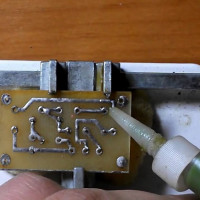 Do-it-yourself dimmer: device, principle of operation + instructions on how to make a dimmer yourself
Do-it-yourself dimmer: device, principle of operation + instructions on how to make a dimmer yourself 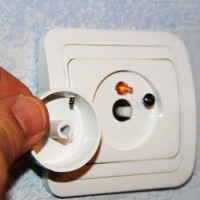 How to connect a dimmer: possible schemes + instructions for connecting with your own hands
How to connect a dimmer: possible schemes + instructions for connecting with your own hands  Dimmer for incandescent lamps: types, how to choose, the best models and manufacturers
Dimmer for incandescent lamps: types, how to choose, the best models and manufacturers 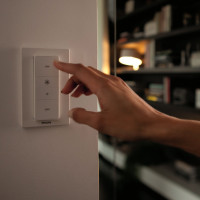 Dimmer for LED strip: types, which is better to choose and why
Dimmer for LED strip: types, which is better to choose and why 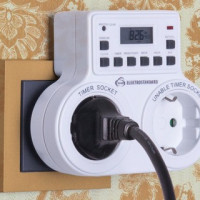 Sockets with a timer: types, principle of operation, which is better to choose and why
Sockets with a timer: types, principle of operation, which is better to choose and why 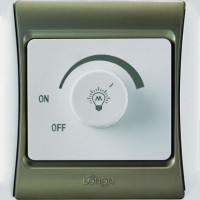 Light switch with dimmer: device, selection criteria and manufacturers review
Light switch with dimmer: device, selection criteria and manufacturers review  How much does it cost to connect gas to a private house: the price of organizing gas supply
How much does it cost to connect gas to a private house: the price of organizing gas supply  The best washing machines with dryer: model rating and customer tips
The best washing machines with dryer: model rating and customer tips  What is the color temperature of light and the nuances of choosing the temperature of the lamps to suit your needs
What is the color temperature of light and the nuances of choosing the temperature of the lamps to suit your needs  Replacement of a geyser in an apartment: replacement paperwork + basic norms and requirements
Replacement of a geyser in an apartment: replacement paperwork + basic norms and requirements
I understand that remote dimers are those that allow you to adjust the light using the remote control, a portable device? Tell me, is it possible to adjust bullets so that it can be used to regulate lighting not in one room, but in several? Maybe there are some special remotes for this? And what is their range with regard to reinforced concrete walls?
Yes, Vladimir, there are dimmers controlled remotely by remote controls. There are dimmers controlled by smartphone applications. There are multi-zone remotes that control lighting through controllers.
Multichannel use radio waves - the range is limited by the room, so as not to interfere with neighbors. Intelligent ones remember the settings, “understand” which zone they are in. On the Internet, you can see the passport for the SR-2819-DIM remote control for 6 zones (attached a screenshot of the 1st page so that you can navigate).
I have not heard about such remotes, they are unlikely to exist. And why do you need to regulate the light in all rooms at the same time? The maximum is applicable when it is necessary to turn on / off the light everywhere.
In general, a dimmer is a thing from the series “until you try it, it’s not really needed”. And then it’s not so comfortable if you have to do without it. It is very convenient to adjust the level of lighting for yourself.